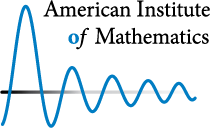6. Spectrum of $\overline{\partial}$-Neumann Laplacian
-
Problem 6.1.
[Fu] Compute the spectrum of the $\overline{\partial}$-Neumann Laplacian on the Hartogs triangle and on the Diederich-Fornaess worm domain. In particular, determine whether or not the corresponding spectra are discrete. -
Problem 6.2.
[Fu] Relate the infimum of the essential spectrum of the $\overline{\partial}$-Neumann Laplacian on the worm domain to the winding of the domain. -
Problem 6.3.
[Fu] Is the spectrum of the $\overline{\partial}$-Neumann Laplacian on a bounded smooth pseudoconvex domain in $\mathbb{C}^n$ always discrete? Is the infimum of the spectrum always a point eigenvalue (ground state energy)? -
Problem 6.4.
[Haslinger] Let $\phi:\mathbb{C}^n\to\mathbb{R}$ be a $C^2$ plurisubharmonic function. Determine the relation between the eigenvalues of the complex Hesssian of $\phi$ and the compactness of the $\overline{\partial}$-Neumann operator on $L^2_{(0,q)}(\mathbb{C}^n,e^{-\phi})$. See [MR3029187] for $n=1$. Determine the relation between the spectrum of the complex Laplacian $\Box_{\phi}$ and the weight function $\phi$. In particular, understand the bottom (infimum) of the essential spectrum.
Cite this as: AimPL: Cauchy-Riemann equations in several variables, available at http://aimpl.org/crscv.
